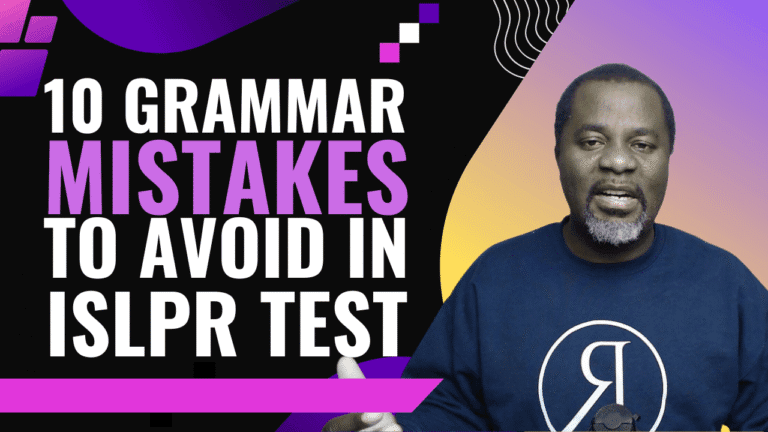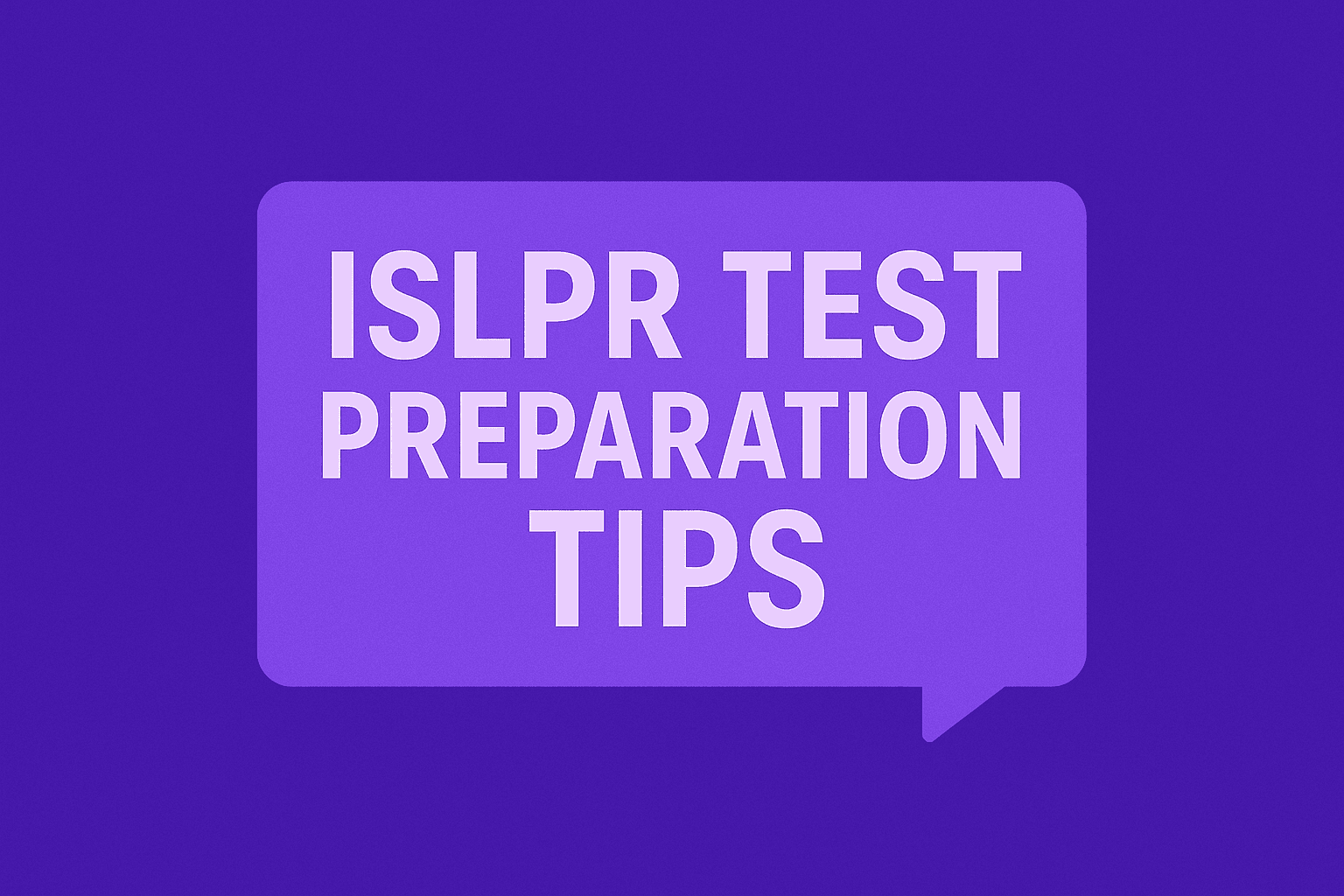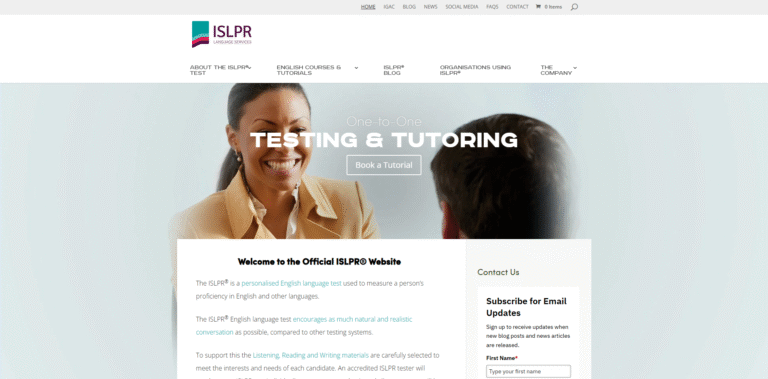The International Second Language Proficiency Ratings (ISLPR) test is a one-of-a-kind English language assessment designed to evaluate an individual’s ability to use English in real-life situations.
Created by Dr David Ingram, co-creator of the original IELTS system, the ISLPR test was developed to meet the need for a more flexible, personalised testing format.
Unlike standardised group exams, the ISLPR focuses on a candidate’s unique background, interests and professional context, making it particularly well suited for teachers, healthcare workers, business students and many other professionals.
A One-to-One Interview and Customised Content
A defining feature of the ISLPR test is its one-to-one format. Each candidate spends the first hour in a face-to-face interview with an accredited ISLPR tester.
During this conversation, the tester assesses speaking, listening and reading skills in an integrated way.
Because the content is tailored to the candidate’s field, whether that be primary school education, business studies or nursing, the test feels more like an informed discussion than a rigid examination.
For example, a primary school teacher might be asked to describe classroom management techniques, while a business student might analyse a mock marketing scenario.
This customised approach ensures that candidates demonstrate language skills directly relevant to their professional roles.
The Shortest Comprehensive Test: Two Hours Only
Despite its personalised nature, the ISLPR test is remarkably efficient. The entire assessment takes just two hours:
- Hour One: Interview
The candidate engages in a guided conversation, during which speaking, listening and reading tasks are seamlessly combined. The tester may introduce short written materials such as emails or policy extracts and ask the candidate to read aloud or summarise key points, then discuss them verbally. - Hour Two: Writing Exam
This self-paced component comprises two short writing tasks. Prompts are chosen to match the candidate’s background and could involve drafting a brief report, composing a professional email or writing an instructional handout.
By integrating these four skills in a compact timeframe, the ISLPR test remains the shortest comprehensive English assessment available in Australia.
Rapid Results and Real-Life Language Assessment
Candidates receive their ISLPR results within five to ten business days. In urgent situations such as visa deadlines or job start dates faster turnaround is sometimes possible.
Because the ISLPR test focuses on authentic communication rather than test-taking tricks, daily English practice is strongly encouraged.
The ISLPR team supports this through free online tutorials, downloadable activity sheets and a regularly updated blog full of practical language exercises.
No Tricks, Just Real Skills
Traditional language tests like IELTS often emphasise techniques for passing the exam rather than genuine ability.
The ISLPR test avoids this by evaluating “real‐life” English. There are no shortcuts or “trick” questions.
Success relies on consistent practice of everyday skills: reading workplace documents, responding to spoken instructions, writing clear correspondence and engaging in professional discussions.
Preparation Resources
To help candidates succeed, you can use the following resources:
- English Tutorials: Video lessons covering grammar, vocabulary and communication strategies.
- Informative Blog: Articles on topics such as effective note-taking, extending vocabulary and overcoming speaking anxiety.
- ISLPR Mentorship: An interactive mentorship program developed by Ronald Kaunda to help students improve their ISLPR scores.
Engaging with these materials daily helps test-takers build the confidence and competence required for the ISLPR test.
Organisations Accepting ISLPR
The ISLPR test is accepted by many universities, professional associations and employer groups across Australia. Candidates uncertain about specific requirements are encouraged to consult their institution’s administrative department, or to contact the ISLPR office directly for confirmation. This ensures that test results meet necessary criteria for employment, registration or study.
Australian Teacher Registration Authorities
- ACT Teacher Quality Institute
- NSW Education Standards Authority
- Queensland College of Teachers
- Teacher Registration Board of Northern Territory
- Teacher Registration Board of South Australia
- Teacher Registration Board of Tasmania
- Victorian Institute of Teachers
Australian Universities & Teaching Programmes
- Australian Institute for Teaching and School Leadership
- Charles Sturt University
- Griffith University
- James Cook University
- La Trobe University
- Southern Cross University
- University of Sydney
- University of the Sunshine Coast
- Victoria University
- Western Sydney University
- Open Universities Australia
Australian TAFE, Colleges & Institutes
- Canberra Institute of Technology
- Melbourne Polytechnic
- TAFE New South Wales
- TAFE Queensland
- TAFE South Australia
- Gold Coast Migration
- Hays International College Pty Ltd
- Language Training Institute
- Melbourne City College
- South Brisbane Institute of Technology
- Strathfield College Pty Ltd
- The Eagle Academy
- Trinity Business College
- Unity College Australia Incorporated
New Zealand Institutions
- NZ Teaching Council
- The University of Auckland (Teaching Programmes)
- Auckland University of Technology (Teaching Programmes)
- The University of Otago
- Universities Admissions Centre
Migration & Admissions Agencies
- Ausworld Migration Pty Ltd
- Queensland Tertiary Admissions Centre
Overseas Institutions
- Akamai University, Hawaii, USA
- Kiribati Institute of Technology, Kiribati
Frequently Asked Questions
- Is the ISLPR test recognised internationally?
While primarily used in Australia, some overseas institutions accept ISLPR results. Check with the relevant authority before booking. - Can I choose my tester?
Appointments are allocated based on availability of accredited testers in your area. - What documents do I need on test day?
A valid photo ID and your test confirmation details are essential. - What happens if I miss my appointment?
Contact the test centre as soon as possible to reschedule, noting that fees may apply.
If any questions remain unanswered, candidates can leave a comment on the ISLPR website or email the support team for a prompt response.
Conclusion
The ISLPR test offers a unique, personalised assessment of English language proficiency that mirrors real-life communication scenarios.
Created by Dr David Ingram, it combines a one-hour customised interview with a one-hour writing exam, delivering rapid, reliable results that accurately reflect your ability to use English in your professional field.
By practising daily with ISLPR’s free tutorials, activity sheets and blog resources, you can develop the genuine skills needed to excel.
Whether you are a teacher, healthcare worker or business professional, understanding and preparing for the ISLPR test will put you on the path to success.
For more information and to access your free information sheet, visit the ISLPR website today.









 How To Write A Personal Statement For A Scholarship
How To Write A Personal Statement For A Scholarship